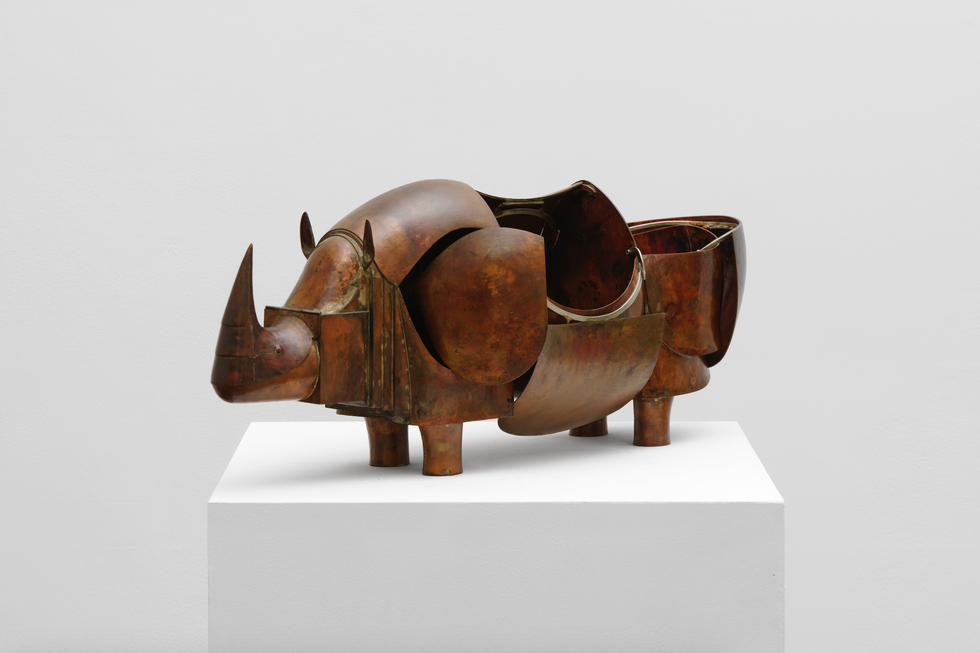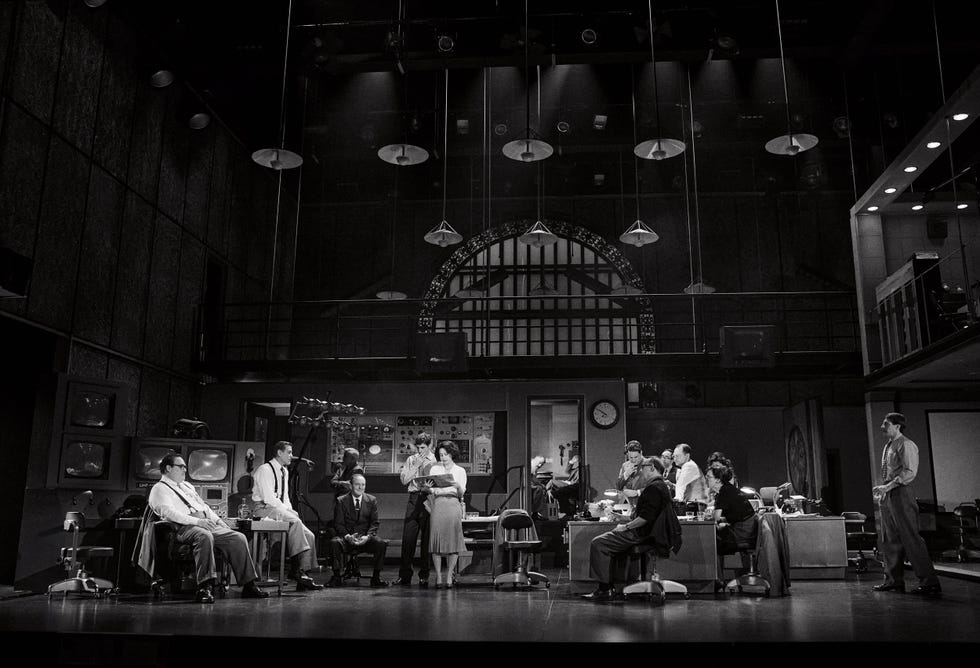It’s TEFAF New York time again. Each year, the world’s top design dealers gather to present furniture and decorative objects that blur the line between art and utility—and command the kind of prices usually reserved for rare artwork. TEFAF, otherwise known as The European Fine Art Fair, is being held at the Park Avenue Armory, through May 14. It’s less a shopping event than a high-stakes showcase, where provenance, rarity, craftsmanship, and narrative drive value. For the ultra-wealthy, these aren’t just tables or chairs—they’re trophies, investments, and conversation pieces with collectible clout. So why does a stepladder cost six figures, or a set of doors flirt with the million-dollar mark? For these three rare items, the answer lies entirely in the details.
Petit Rhinocéros Mécanique by François-Xavier Lalanne
Selling for an estimated $1.2 million | 1982, French | Exhibited by Mitterrand
No major design fair feels complete without a buzz-worthy piece by François-Xavier Lalanne, whose whimsical, surrealist sculptures continue to dominate high-end design sales. Just last year in a sale at Christie’s in New York, a sale of 70 Lalanne animal sculptures brought in a total of nearly $59 million, with a 10-foot-tall bronze bear going for a record-making $6.1 million, three times its low estimate. That was after a sale bringing in just over $77 million smashed records at Christie’s as the auction house’s highest-ever design sale.
The small copper rhinoceros is selling for €1.1 million (or $1,237,672). That’s hardly surprising, given that a near-replica flew off the auction block at Christie’s in 2020 for just over $489,000. Sure, a small copper rhinoceros priced at $400,000 won’t do much beyond command attention—for that sum, you could purchase a fleet of 41 Tesla robots ready to handle your chores with the snap of a finger—but its value lies in more than just practicality.
The rhinoceros was one of Lalanne’s great obsessions, and became a recurring theme and a symbol in his artwork. He began his rhinoceros series with his 1964 Rhinocrétaire desk/secretary. It was the first sculpture François-Xavier is known to have created after retiring from painting in 1963, according to The Art Newspaper (for that reason, it sold for an eye-watering $19.3 million at Christie’s in Paris).
After creating numbers 2, 3, and 4 in 1966, 1975, and 1993 respectively, Lalanne transposed this animal into smaller dimensions with rare versions featuring a mechanism in which it came apart. This Petit Rhinocéros Mécanique is among the series of rhinoceros variants Lalanne continued to create. Made in 1982, the miniaturized and mechanized object shows off Lalanne’s expert artistry in creating mechanized objects with nostalgically charming appeal. With collectors from the worlds of fashion, tech, and contemporary art all chasing Lalanne, it’s likely to be among the fair’s most contested works.
Rolling Step Ladder by Jean Prouvé
Selling for an estimated $350,000 | ca. 1950, French | Exhibited by Laffanour / Galerie Downtown
Sure, your average step ladder might be somewhere in the market of $400 or so—if you’re a Crate & Barrel fan. What makes the $350,000 markup on this specimen worth its salt? It was designed by French engineer-designer Jean Prouvé, who’s vintage designs have been sought after for years by connoisseurs and museums, has become recognized in recent years by the general design public. In 2022, his name blew up all over again after Vitra reintroduced a series of classic Prouvé designs.
This rolling stepladder was commissioned in the early 1950s by Société Générale, one of France’s largest banks, according to the gallerist, Galerie Downtown. It was specifically created for use in vault rooms, designed to reach high bank lockers. While Prouvé designed other similar stepladder models for various bank locations, this particular model was part of the interior design collection for Société Générale’s headquarters in Douai, France, which also featured Prouvé’s iconic ‘Direction’ desks, armchairs, and low tables.
A rare example of Prouvé’s talent for turning utilitarian design into something sculptural through the use of bent sheet metal and a singular handrail shape, the step ladder is expected to sell for as much as $350,000. In 2023, one of its sister models sold for $364,830 at Christie’s; A similar item was estimated to sell between $275,000 and $325,000 in a closed auction at Sotheby’s.
Set of Straw Marquetry Doors by Jean-Michel Frank
Selling for an estimated $1,500,000 | ca. 1929, French | Exhibited by Galerie Jacques Lacoste
This showstopping set of doors by legendary Jean-Michel Frank may not be a conventional wall piece, but it’s poised to command a serious price—possibly into the seven figures. While details about the gallerist’s asking price are still under wraps, we know smaller items by Frank went for just as much. In 2022, a cabinet built by the near-mythic French designer around 1925 sold at Christie’s for a whopping $1.5 million, a far cry from its estimated $500,000 to $700,000 price tag. And this cabinet didn’t sit in a royal villa.
Yes, these doors held pride of place in Princess Winnaretta de Polignac’s villa near Paris, which she transformed after acquiring it in 1929 in a state of disrepair after the Great War. Crafted in Frank’s signature straw marquetry technique and part of a broader collection of furniture and decorative elements he created for the estate, these doors stood in Princesse de Polignac’s music salon, where as a devoted patron of the arts, entertained Claude Monet, Marcel Proust, and Igor Stravinsky, among others.
Rachel Silva is the associate digital editor at ELLE DECOR, where she covers all things design, architecture, and lifestyle. She also oversees the publication’s feature article coverage, and is, at any moment, knee-deep in an investigation on everything from the best spa gifts to the best faux florals on the internet right now. She has more than 16 years of experience in editorial, working as a photo assignment editor at Time and acting as the president of Women in Media in NYC. She went to Columbia Journalism School, and her work has been nominated for awards from ASME, the Society of Publication Designers, and World Press Photo.





